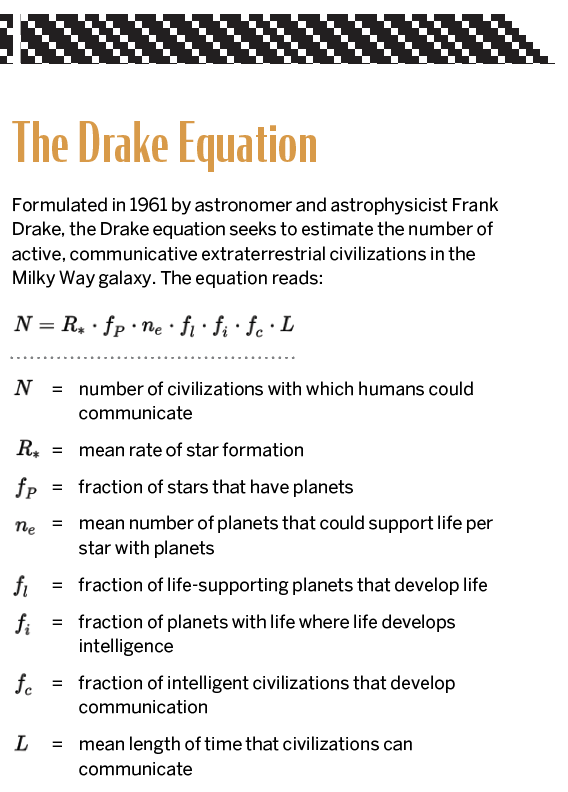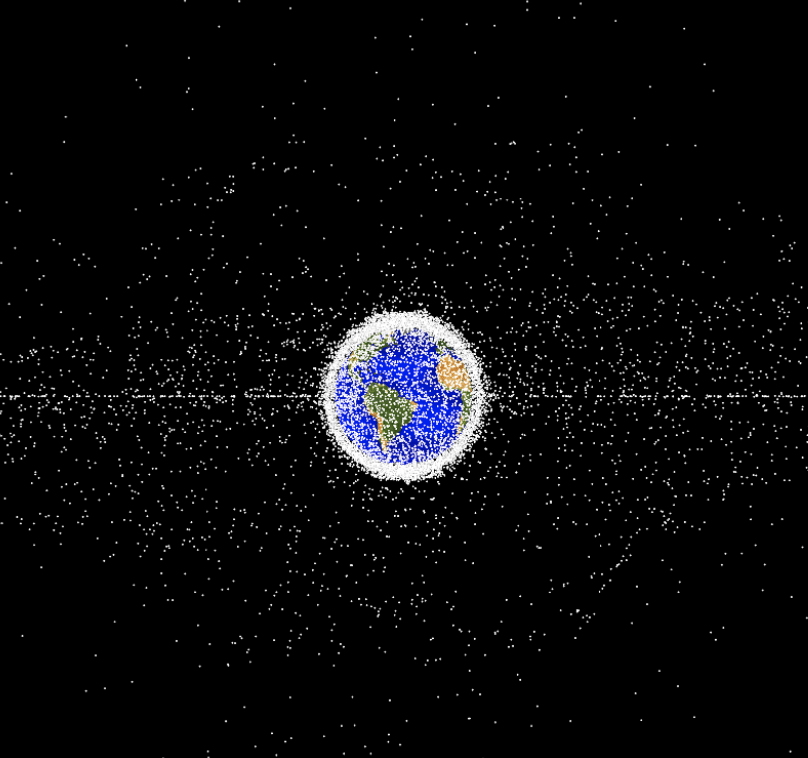If You Follow the Math, We Are Probably Not Alone
Two U.K.-based scientists came up with a new method for estimating the number of intelligent civilizations in the galaxy, and the future of human civilization serves as an important indicator

Are humans alone in the galaxy? The question is far from new and its answer remains unknown. But breakthroughs in astrophysics, paired with what is known about how life began on Earth, enable scientists to devise calculations estimating what—or who—could be out there.
Two such scientists are U.K.-based Christopher Conselice and Tom Westby, who in June of last year published a scientific paper called The Astrobiological Copernican Weak and Strong Limits for Intelligent Life. In that paper, they describe their investigation into the possible number of communicating extraterrestrial intelligent (CETI) civilizations based on differing scenarios.
Utilizing the latest astrophysical information, the pair rederived a new version of the Drake equation, which astronomer and astrophysicist Frank Drake developed in 1961 to estimate the number of CETI civilizations. They concluded there could be as many as 211 and as few as four in the Milky Way galaxy, with the most likely number around 36.
Should such civilizations exist, the research indicated, the nearest one to Earth is probably too far away to detect or communicate with, given the technology currently available. But despite the remoteness of the nearest likely neighbor, public excitement—and media attention—have abounded.
Luckbox sat with Conselice and Westby to ask them about their research, the attention it garnered and its bigger-picture implications that many may have missed.
The following Q&A has been edited lightly for style and brevity.
It seems that interest in extraterrestrial life has been gaining traction. Would you say that’s accurate?
Westby: Whilst this has probably been one of the fundamental questions of humanity for millennia, it is true that just in recent years it’s taking on a new footing. Obviously, our work is initially anchored in the Drake equation from the 1960s, and prior to that any question about the number of civilizations in the galaxy would have been completely outside of the realm of scientific inquiry. But it was Drake’s work about a half a century ago that first set it on some scientific footing.
How does the Drake equation compare with your research?
Conselice: Well, the Drake equation is really a very general equation that predicts the number of active civilizations in our galaxy. And it’s very simple in the sense that you have a star formation rate, multiply that by the number of stars with planets, the number of planets that have life, the number of those that form intelligent life, etc., etc., etc.
The problem with that is the Drake equation has these terms which are impossible to ever know until we know what’s going on with life in our galaxy. For example, one of the terms in the Drake equation is the fraction of intelligent life which communicates, or the fraction of life which turns into intelligent life. These are things you could never know based on a computer simulation, based on anything you can do on Earth. You have to actually explore the galaxy to find out how many there are, and then you can calculate that number.
So, it’s useless in some ways of actually knowing something reasonable because that number could be from zero to one for those few terms. But there are terms in the Drake equation that we do know now, like the fraction of stars that have planets in the habitable zone, for example.
Those are the kinds of things that we use, but the other assumption that we make is using the astrobiological Copernican principle, which essentially says that a star which has an evolution in a lifetime similar to the sun will produce life like ours within a certain amount of time, which actually doesn’t change the results that much. But if you take just four-and-a-half billion years or so, which is how long it took for intelligent life to form on our own planet, then you can calculate how many you would expect throughout the galaxy.
That depends strongly on what’s in both of these equations, the Drake equation and the one we derived, the CETI equation, which is the lifetime of these civilizations. So that’s a big unknown. What Tom and I did was look at this and say, ‘Well, let’s take as a limit how long on Earth we’ve had a communicating intelligent civilization,’ which has been about 100 years (by radio waves).
We don’t know for sure how long our civilization will last, so we just take the lower limit, which is about 100 years. Well, if you have other planets around other stars in the habitable zone, and you have stars which can survive for five billion years or so, then if you assume that the lifespan is 100 years for the civilizations as a minimum, you get a minimum amount of expected communicating intelligent civilizations that you would have in the galaxy.
So it’s informed by what we know about life and the origin of life here on Earth?
Westby: Yes, and I would agree that obviously the greatest problem of the extraterrestrial question, of course, is trying to extrapolate from a single data point that we know of here on Earth. And that’s always the problem that haunts any investigation of this kind.

In a sense, what our equation is doing is really a great simplification, where it’s taking away a lot of that unnecessary speculation and centers on a much more modern framework of known astrophysics. We really just approached the question of the development of life—and indeed intelligent life—as if it is just a natural byproduct of stellar processes. We really just want to know the fraction of all the stars in our galaxy which are old enough, rich enough in terms of chemical complexity, and long-lived enough with stable enough environments to potentially yield the same environment that we’ve had here.
What does the media miss or overemphasize when they report on your research?
Conselice: Well, I would say that there’s too much focus on the number 36 in some cases. The Guardian in the U.K. published that in the title of their article about this research. Thirty-six is just the most-likely number, but there’s a distribution of possible numbers. The context of that is very hard to explain in the news media—and that’s why I understand why it happened—but that’s a little frustrating when people focus on just one single number.
Westby: And, of course, that’s at the end of the scale in which we assume the average lifetime of a civilization like our own is just 100 years—beyond the point at which we became radio communicating, as it were. So, of course the
36 number would be expected to grow and grow as a function of L if we can assume that a lifetime is actually much longer than we’ve had currently. But as you say, Chris, that became the headline figure. And in reality, it’s not really a number that we found at all. It is a new method to try and attack this problem.
What’s the value in trying to attack this problem in the first place?
Conselice: It’s of vast interest to people in general about our origins and what’s going to happen to us as a species on Earth in the long term, and by looking for these CETIs, we will actually be answering—potentially—some of these questions about where we came from.
There are many ways you can look at the implications of finding life, or especially intelligent life, in another part of the galaxy or another part of the universe. It could tell us that we’re not unique and that there is a scientific way in which life and intelligent life develops, and that can have profound implications for how we understand our own origins—and about where things are going for us in terms of how we should look at the basis of our own existence.
Westby: With all new developments in any scientific realm, the change can be societal and philosophical. For instance, the transition into Newtonian mechanics just changed the way that we thought about our position on the Earth and changed the way that we thought about our potential to understand and utilize the laws of physics on the Earth.
It might be the next step along that process, really, where we start to think of our own life, our evolution, our intelligence, our ability to communicate, as just a natural byproduct of scientific processes. And we start to understand that in a more profound sense rather than thinking of it as something mysterious and mystical. Really, we understand that it’s just within the realm of other laws of physics.
And of course, as you’re saying, Chris, where the conditions are right, we can expect it to be repeatable. And where we learn more about where those conditions are right in our galaxy, we’ll know better where to look and what will be the signs for intelligent life elsewhere.








